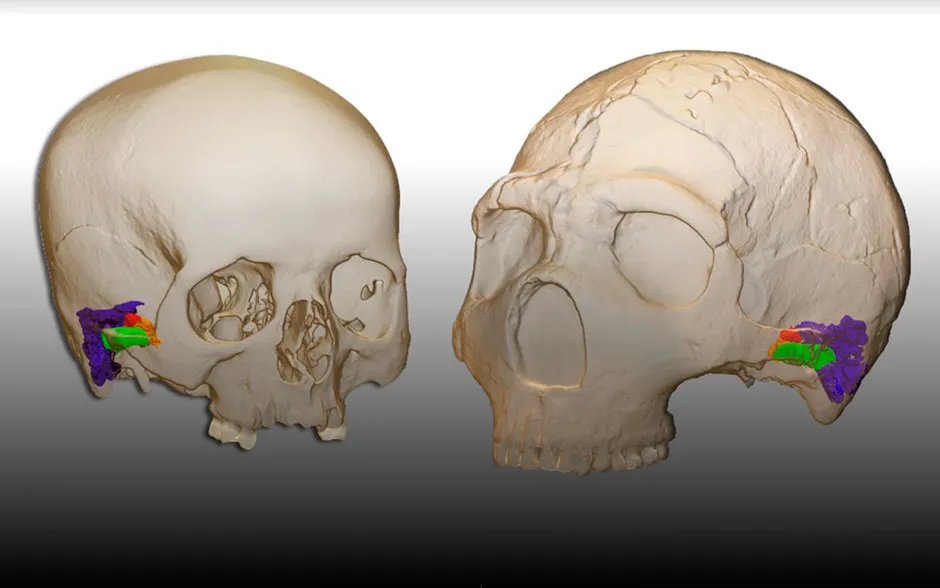Humans were thought to have spoken language unlike any other species on Earth. But now, scientists think another species of human, the Neanderthal, had the ability to hear and produce speech just like us.
“For decades, one of the central questions in human evolutionary studies has been whether the human form of communication, spoken language, was also present in any other species of human ancestor, especially the Neanderthals,” said Prof Juan Luis Arsuaga at the Universidad Complutense de Madrid, one of the co-authors of the study.
The international team of researchers studied the auditory capacities of Neanderthals, Homo sapiens and ancestors to Neanderthals from the archaeological site Atapuerca.
By using high-resolution CT scans, they created virtual 3D models of the ear structures of each species. They used this data to model the frequencies that each species could hear the best.
Though the human ear can hear sounds between frequencies of 20Hz and 20kHz, the majority of human speech sounds are up to 5kHz. Neanderthals showed a greater sensitivity in the frequency range of 4-5 kHz than their ancestors from Atapuerca, similarly to Homo sapiens.
Read more about Neanderthals:
The researchers also looked at the ‘occupied bandwidth’ of each species: the range of frequencies to which the ear is most sensitive.
A wider occupied bandwidth means the species can distinguish a wider range of sounds, and so communicate more effectively. Neanderthals’ occupied bandwidth was wider than their ancestors’, and similar to Homo sapiens.
The fact that Neanderthals had this hearing fine-tuned to human speech, which hadn’t been evolved by their ancestors in Atapuerca, suggests that they had the capacity for speech to go alongside it.

“The presence of similar hearing abilities, particularly the bandwidth, demonstrates that the Neanderthals possessed a communication system that was as complex and efficient as modern human speech,” said Prof Mercedes Conde-Valverde at the Universidad de Alcalá in Spain, lead author of the study.
Neanderthals could even have had a form of language, the researchers believe. However, that doesn't necessarily mean they had the mental faculties to speak the same language as ancient humans.
Prof Rolf Quam, co-author of the study, is confident in the study’s findings. “This is one of the most important studies I have been involved in during my career,” he said. “The results are solid and clearly show the Neanderthals had the capacity to perceive and produce human speech.”
Reader Q&A: Why did the Neanderthals go extinct?
Asked by: Kevin Simpson, Durham
The spread of modern humans across Europe is associated with the demise and ultimate extinction of Neanderthal populations 40,000 years ago, likely due to competition for resources.
While the jury is still out on whether or not Neanderthals and modern humans differed in cognition, the ability of a small number of humans to replace a larger population of Neanderthals may have been due to a higher level of culture – our power to develop and pass on knowledge of better tools, better clothing, or better economic organisation.
Interbreeding may also have lent us an advantage. Between 1 and 4 per cent of the DNA of all living humans (except sub-Saharan Africans) is Neanderthal in origin.
Read more: